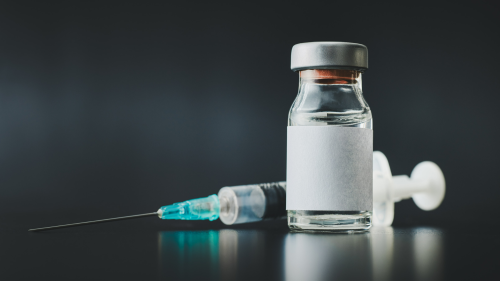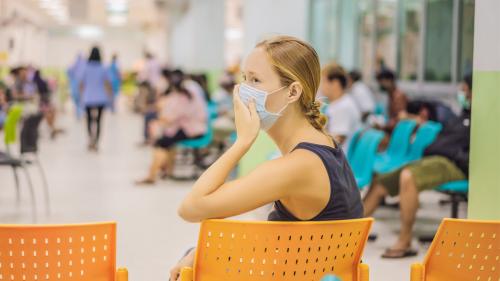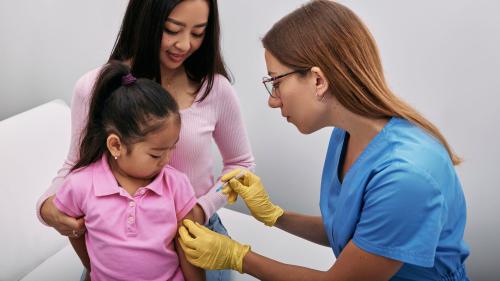
-
Understanding primary immunodeficiency (PI)

Understanding PI
The more you understand about primary immunodeficiency (PI), the better you can live with the disease or support others in your life with PI. Learn more about PI, including the various diagnoses and treatment options.
-
Living with PI
-
Addressing mental health
-
Explaining your diagnosis
- General care
- Get support
- For parents and guardians
-
Managing workplace issues
- Navigating insurance
-
Traveling safely

Living with PI
Living with primary immunodeficiency (PI) can be challenging, but you’re not alone—many people with PI lead full and active lives. With the right support and resources, you can, too.
-
Addressing mental health
-
Get involved

Get involved
Be a hero for those with PI. Change lives by promoting primary immunodeficiency (PI) awareness and taking action in your community through advocacy, donating, volunteering, or fundraising.
-
Advancing research and clinical care
-
Research Grant Program
-
Consulting immunologist
-
Diagnosing PI
-
Getting prior authorization
-
Clinician education
-
Survey research
-
Participating in clinical trials

Advancing research and clinical care
Whether you’re a clinician, researcher, or an individual with primary immunodeficiency (PI), IDF has resources to help you advance the field. Get details on surveys, grants, and clinical trials.
-
Research Grant Program
After a surge of COVID-19 cases in the winter, the number of cases in the United States is lower – but that doesn’t mean it’s time to let your guard down. With fall approaching and indoor activities once again picking up, pay close attention to transmission in your local community and pursue as many defenses as you can against the virus.
In an Immune Deficiency Foundation (IDF) COVID-19 Update Forum, Dr. Michele Pham, University of California San Francisco Associate Chief of Allergy and Immunology for Primary Immunodeficiency, provided an overview of SARS-CoV-2 infections and variants and shared the latest vaccine protocols and therapies.
While hospitalizations and deaths due to COVID-19 in the U.S. continue to decrease and level off, virus transmission rates remain significant, with about 30 percent of communities experiencing a high level of transmission and about 43 percent a moderate level.
Part of the reason why the virus continues to circulate at such levels is that it is adapting to evade being eliminated by antibodies. SARS-CoV-2 variants have evolved from beta to delta to omicron and its subvariants.
“Variants are expected because a virus will always try to borrow and change and try to find ways to become more infectious,” said Pham.
Subvariants of omicron, including BA.4 and BA.5, have mutations in the spike protein allowing them to elude immune response antibodies raised through infection with prior vairants or vaccination. Their replication advantages also allow them to produce higher viral loads.
Another reason for the high transmissibility of the omicron variants is that they present differently in people and therefore are more readily passed because people don’t know they’re infected. Some may have symptoms such as cough, fatigue, runny nose, sore throat, headache, shortness of breath, and fever. Others aren’t even aware they are carrying the virus.
For example, one study from September 2021 to May 2022 testing the blood of adults showed that, of those who had serological evidence of recent infection with COVID-19, 56 percent reported they were unaware they had an infection, and 10 percent had mild symptoms they thought were a common cold.
“This suggests that low rates of omicron variant infection awareness may be a key contributor to the rapid transmission of the virus within communities,” said Pham.
“But potentially that could help skew things toward herd immunity where a community has protection from a virus because so many people have immune responses or infection with immune responses.
“However, as we know with COVID, reaching herd immunity and having it be protective is a little bit complicated because there have been reinfection cases and our immune systems do seem to wane over time even with the vaccine responses, even with normal healthy immune systems.”
In fact, omicron has the highest reinfection rate of all the variants – 30 times more than the alpha variant and 10 times more than the delta variant.
Combine the ever-changing variants and asymptomatic individuals with fewer people taking precautions to curtail the virus and a lack of full participation in vaccine programs, and the virus persists.
Fortunately, researchers continue to devise ways to curtail the virus’s success, and in their most recent efforts, they’ve developed a booster vaccine that is comprised of half the original vaccine and half that targets the omicron variant found in both BA.4 and BA.5.
Both Pfizer and Moderna make the new updated bivalent booster, and it’s currently being distributed nationwide. The updated bivalent booster is recommended for ages 12 and up and replaces prior monovalent boosters, which will no longer be authorized for distribution for those over age 12.
For the immunocompromised community, the Center for Disease Control recommends the following vaccine schedule for Pfizer and Moderna:
Pfizer – For 12 years and older, three primary doses and a 4th updated bivalent booster dose with only Pfizer
Moderna – For 18 years and older, three primary doses and a 4th updated bivalent booster dose with either Pfizer or Moderna
Moderna – For 12-17 years, three primary doses and a 4th updated bivalent booster dose with only Pfizer
Pfizer – For 5-11 years, three primary doses and a 4th original booster dose
Pfizer – For six months-4 years, three primary doses
Moderna – For 6 months-11 years, three primary doses
Pham recommends vaccines and boosters for all immunocompromised persons.
“Even for my X-linked agammaglobulinemia (XLA) patients who don’t make antibodies, these vaccinations can help stimulate other immune cells that can fight infections as well.”
In a study of how the vaccine performed in persons with functional B cell defects like common variable immune deficiency (CVID) and specific antibody deficiency (SAD)/hypogammaglobulinemia, results supported the use of the vaccine.
Most of the group in the study produced a positive T cell response, and while the antibody response wasn’t strong after two doses, after a third dose, the participants blocked the virus at normal levels.
“There was definitely a trend toward a positive antibody response in general after a third dose of the vaccine, so I’m a really strong proponent of keeping up with boosters because we do know that many patients even with primary immunodeficiency will respond,” said Pham.
COVID-19 vaccines can be administered at the same time as other vaccines and at any time in relation to immunoglobulin (Ig) replacement therapy.
In addition to precautionary steps like masking and vaccines, persons with PI may also opt for Evusheld, a medication designed to prevent COVID-19. Prophylaxis, Evusheld consists of lab-made antibodies that target the virus and work to stop infection.
Evusheld is administered through two same-day, consecutive intramuscular injections every six months. It’s authorized for ages 12 and up who are moderate to severely immunocompromised and may not have an adequate response to COVID-19 vaccination. The medication is not a substitute for the vaccine.
“The availability is greater now than when it was first released,” said Pham.
Finally, those with PI who use Ig products may have an added layer of protection as they can expect their treatment to contain antibodies to COVID-19 coming from the donor pool that developed protective antibodies from vaccination and infection.
“We are learning more and more each day about SARS-CoV2, but there is still much to learn,” she said.
Related resources

Foundation to follow medical societies' vaccine schedules in light of ACIP hepatitis B decision

Preparedness key when visiting emergency department with PI

Update: ACIP meeting adds to COVID-19 vaccine confusion
Sign up for updates from IDF
Receive news and helpful resources to your cell phone or inbox. You can change or cancel your subscription at any time.





The Immune Deficiency Foundation improves the diagnosis, treatment, and quality of life for every person affected by primary immunodeficiency.
We foster a community that is connected, engaged, and empowered through advocacy, education, and research.
Combined Charity Campaign | CFC# 66309

